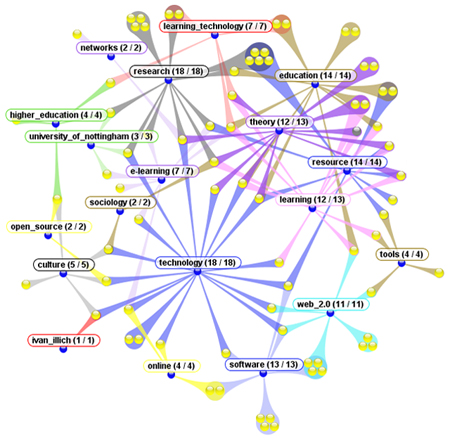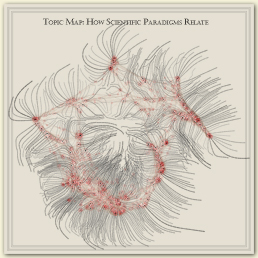Visualizing Social Bookmarks
Sunday, January 11th, 2009
This is just a small part of my Delicious site as interpreted by the CALIBRATE visualization programme developed by Joris Klerkx in the Department of Computer Science at Katholieke Universiteit Leuven. The tool identifies and presents tag and community (multiple-user) relational structures using cluster mapping, and integrates a list view and frequency filter. In a paper just published online in the Journal of Digital Information, Klerkx and Erik Duval describe the development of the programme and present results from ‘Think Aloud’ user testing and post-experimental questionnaires. You can download the software and view a demo video here.
Reference
Klerkx, J. & E. Duval, E. (2009). Visualising Social Bookmarks. Journal of Digital Information, 10(2).


